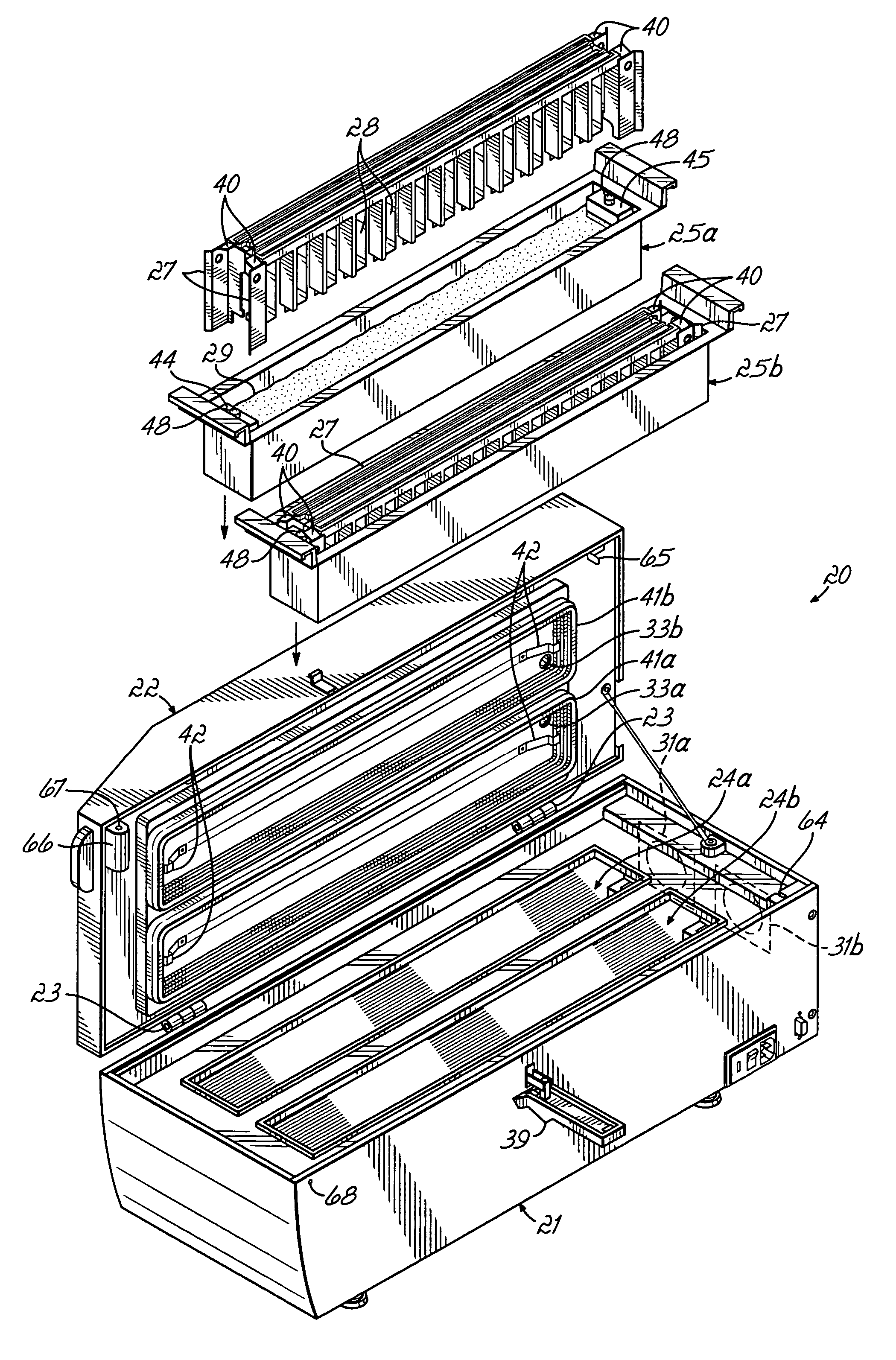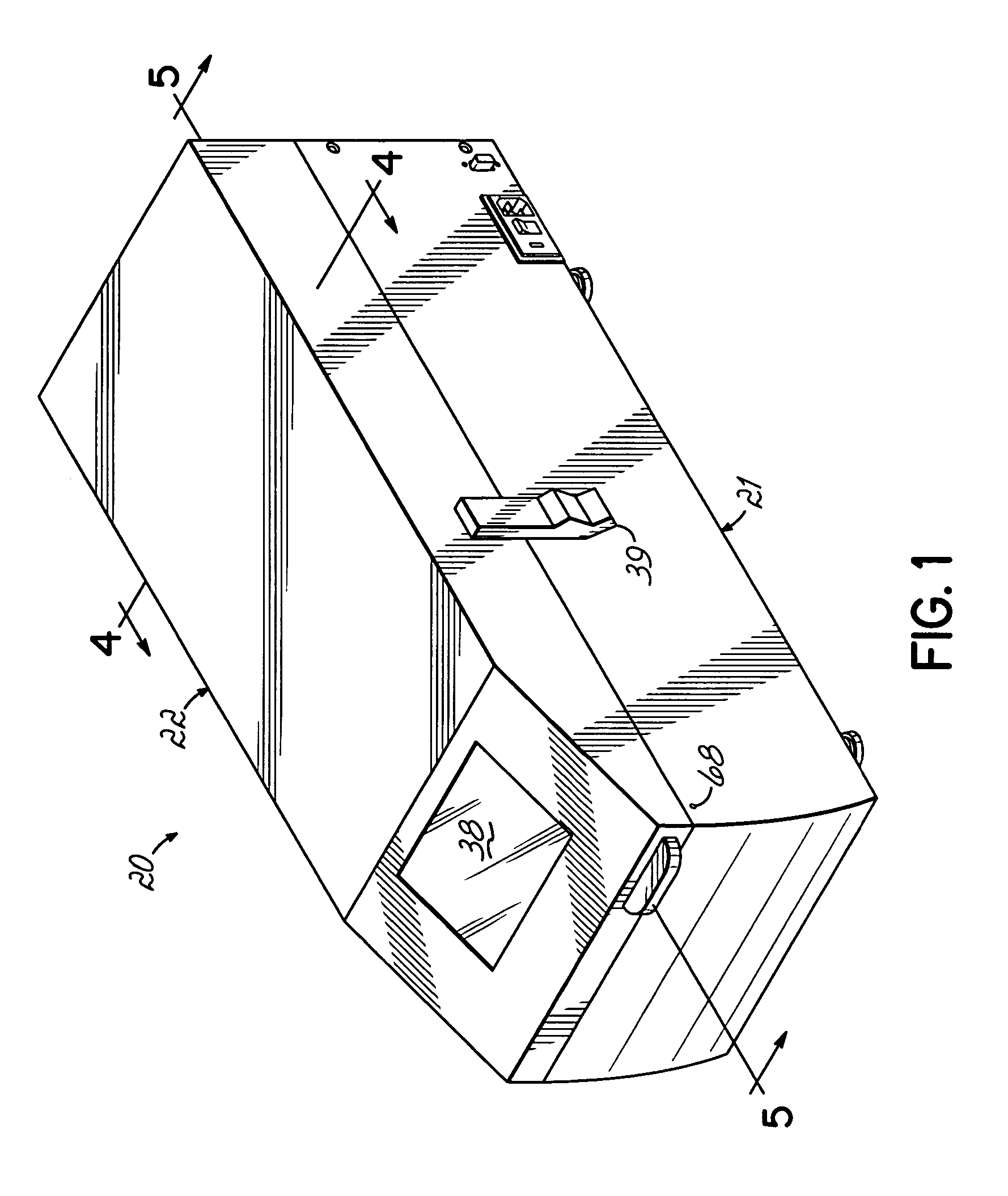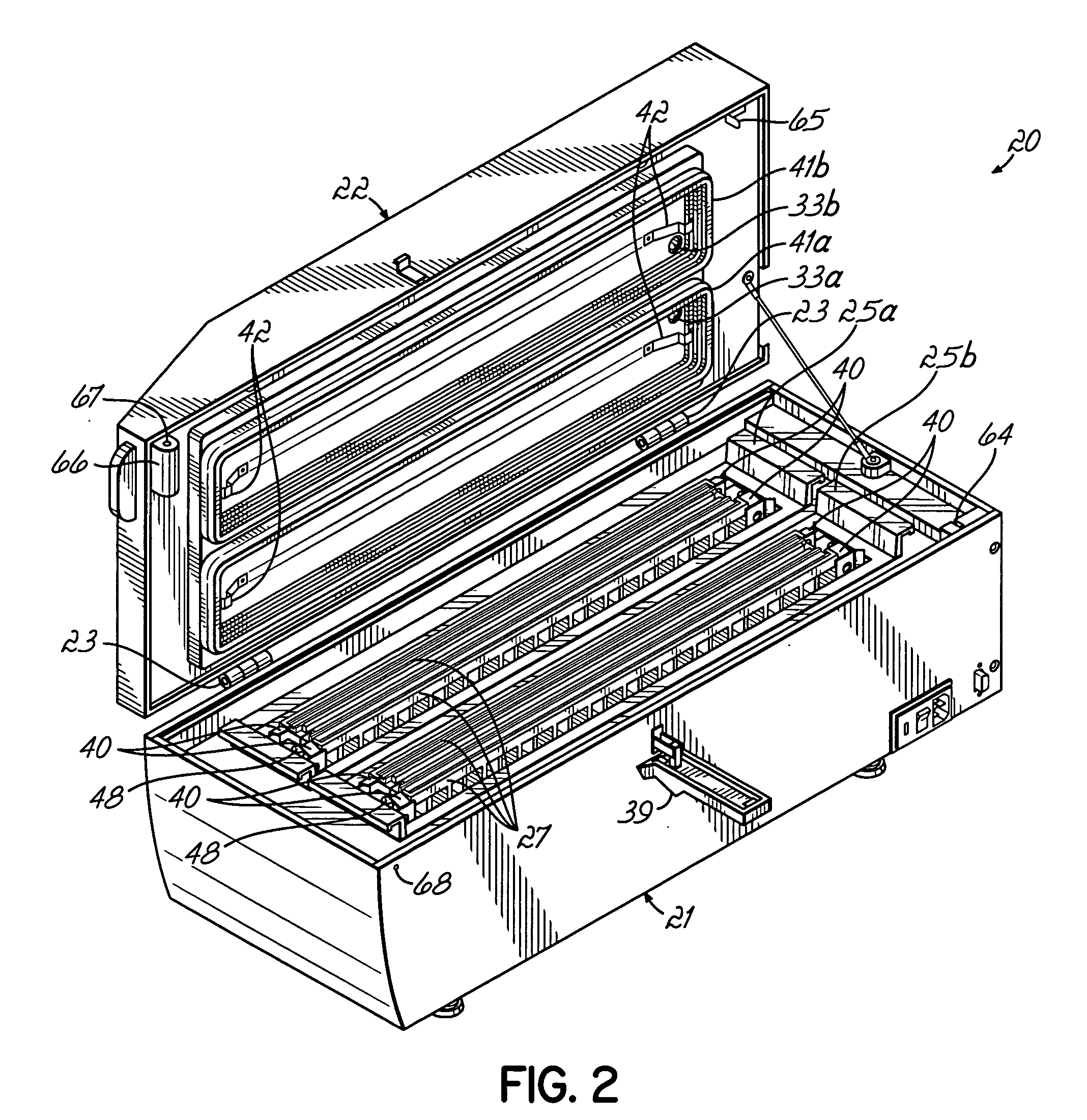Slide treatment apparatus and methods for use
a slide treatment and slide technology, applied in the field of slide treatment apparatus and methods, can solve the problems of increasing the non-specific background interaction with antibody reagents, the slide morphology or tissue loss, and the microwave heating is not ideal, so as to reduce the amount of solution used and the cost of the slide treatment process.
- Summary
- Abstract
- Description
- Claims
- Application Information
AI Technical Summary
Benefits of technology
Problems solved by technology
Method used
Image
Examples
Embodiment Construction
[0022] Referring to the embodiment shown in FIGS. 1, 2 and 3, a slide treatment module 20 has a base 21 and a removable cover 22 that is attachable to the base by hinges 23. The base 21 contains two cavities 24a, 24b that are sized to receive and support respective tanks 25a, 25b. Alternatively, the base 21 can contain more than two cavities 24. The tanks 25 are filled with a slide treatment solution or liquid 29, and slide racks 27 holding slides 28 are immersed in the solution. The cover 22 has seals 41a, 41b that surround the respective tanks 25a, 25b when the cover 22 is closed and locked with a manual latch 39.
[0023] Referring to an embodiment of FIGS. 3, 4 and 5, each of the tanks 25a, 25b has support blocks 44, 45 mounted at the tank end walls. Each pair of support blocks 44, 45 receives supports tabs 40 of slide racks 27 that hold slides 28 being treated in a solution 29 in a respective tank 25a, 25b. Each of the tanks 25a, 25b is designed to support two or more slide racks...
PUM
| Property | Measurement | Unit |
|---|---|---|
| boiling points | aaaaa | aaaaa |
| boiling points | aaaaa | aaaaa |
| melting temperature | aaaaa | aaaaa |
Abstract
Description
Claims
Application Information
 Login to View More
Login to View More - R&D
- Intellectual Property
- Life Sciences
- Materials
- Tech Scout
- Unparalleled Data Quality
- Higher Quality Content
- 60% Fewer Hallucinations
Browse by: Latest US Patents, China's latest patents, Technical Efficacy Thesaurus, Application Domain, Technology Topic, Popular Technical Reports.
© 2025 PatSnap. All rights reserved.Legal|Privacy policy|Modern Slavery Act Transparency Statement|Sitemap|About US| Contact US: help@patsnap.com



